Space

I'm going to step above my (science) pay grade with an idea. Perhaps it is already being worked on and I just have not heard of it - quite likely. And perhaps it can't be done; although it seems to me that it could be done.
A couple of years back Hubble captured some images from not long after the big bang. It was able to capture this via the assistance of a gravitational lens, which magnifies light as it bends around a massive object(s), in the case of these images a cluster of galaxies. Essentially this magnification gives a boost to an already powerful…
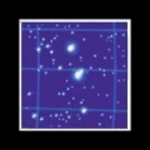
Integral has captured one of the brightest gamma-ray bursts ever seen. A meticulous analysis of the data has allowed astronomers to investigate the initial phases of this giant stellar explosion, which led to the ejection of matter at velocities close to the speed of light. In particular, the astronomers believe that the explosion lifted a piece of the central engine’s magnetic field into space. On 19 December 2004, the blast from an exploding star arrived at Earth. ESA’s Integral satellite, an orbiting gamma-ray observatory, recorded the entire event, providing information for what may…
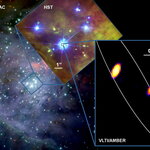
A team of astronomers, led by Stefan Kraus and Gerd Weigelt from the Max-Planck-Institute for Radio Astronomy (MPIfR) in Bonn, used ESO's Very Large telescope Interferometer (VLTI) to obtain the sharpest ever image of the young double star Theta 1 Ori C in the Orion Trapezium Cluster, the most massive star in the nearest high-mass star-forming region.
The new image clearly separates the two young, massive stars of this system. The observations have a spatial resolution of about 2 milli-arcseconds, corresponding to the apparent size of a car on the surface of the moon. The team was able to…
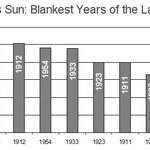
The sunspot cycle is behaving a little like the stock market. Just when you think it has hit bottom, it goes even lower.
2008 was a bear. There were no sunspots observed on 266 of the year's 366 days (73 percent). To find a year with more blank suns, you have to go all the way back to 1913, which had 311 spotless days. Prompted by these numbers, some observers suggested that the solar cycle had hit bottom in 2008.
Maybe not. Sunspot counts for 2009 have dropped even lower. As of March 31st, there were no sunspots on 78 of the year's 90 days (87 percent).
The "blankest years" of…

Mission Madness got personal. Perhaps it was the SPB ballooning of votes, perhaps it is simply inherent in any popularity contest like this. With only three rounds let to go (vote early, vote often!), the epithets are flying. Match the quote below with its quarterfinalist mission!
Trash Talk
"a mission to cold, dead rocks"
"biologically infested mission"
"biologically infested mission"
"hasn't launched yet"
don't even count as [a] mission!
"It either deflates or explodes"
Mission
LRO
Freedom7
Vikings I&II
SOHO
SPB
ORION
Expedition 16
New Horizons
And yes, that's only 6 comments for…
I'm putting the finishing touches to a GUI when the red light starts flashing. The voice comes over the PA from ops, "Warning, Jupiter hoving to view". We quickly drop our work and run across the metal crosswalk that separates us from the STEREO operations bunker. Inside, against the din of the klaxon, we see the massive bulk of Jupiter crowding the leftmost of the main displays. STEREO B was in danger!
And here is the result from our STEREO website. Okay, I made up the bit about the red light and the klaxons. And after this brief science break, I'll even bring in some irony.
From the…
It was bound to happen - stink-free underwear. And naturally, it was developed by women.
Textile experts at Japan Women's University in Tokyo developed J-ware, a a line of odor-free underwear and casual clothing. The first Japanese astronaut to live on the International Space Station, Koichi Wakata, is the guinea pig (or maybe his fellow ISS habitants are).
The clothes are designed to kill bacteria, absorb water, insulate the body, dry quickly, are flame-resistant and anti-static, according to the Reuters article. And , according to a bit of PR-sounding information, they are…
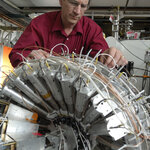
Research by Michigan State University scientists is helping shed light on neutron stars, city-sized globs of ultra-dense matter that occasionally collapse into black holes.
A team led by Betty Tsang, a professor at MSU’s National Superconducting Cyclotron Laboratory, has had some success in measuring a key nuclear quality that may make it easier to describe the outer crusts of such stars.
A neutron star is produced when a massive star explodes as a supernova and then collapses onto itself. The result is one of the oddballs of the universe, a star that is roughly 15 miles in diameter but…

A shock hit NASA's Mission Madness tournament when the fight between the SPB balloon mission and the MER rovers "Spirit" and "Opportunity" escalated to unexpected levels. And now you can find out just how this happened.
'Mission Madness' is a NASA Edge-run voting contest where the public gets to vote for their favorite mission, in a series of 1-on-1 brackets leading to the final winner.
In round 1, last week, the Superpressure Balloon mission (SPB) was pitted against the Mars Exploratory Rovers (MER), better known as Spirit and Opportunity. On one hand, you have a balloon almost one and a…
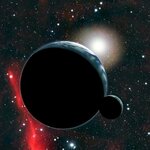
Does a twin Earth exist somewhere in our galaxy? NASA's Kepler spacecraft just launched to find such worlds, though in a very specific area. If that search succeeds, the next questions driving research will be: Is that planet habitable? Does it have an Earth-like atmosphere?
Astronomers say the James Webb Space Telescope (scheduled for launch in 2013) can help. In a new study, Lisa Kaltenegger (Harvard-Smithsonian Center for Astrophysics) and Wesley Traub (Jet Propulsion Laboratory) examined the ability of JWST to characterize the atmospheres of hypothetical Earth-like…